Amir Mir
Following the recent killing of Al Qaeda chief Osama bin Laden in an American military raid, the Obama administration has adopted a new strategy towards the chief of the Afghan Taliban Mullah Mohammad Omar, which is aimed at persuading the fugitive extremist leader to agree to a negotiated settlement of the decade-long conflict in Afghanistan, writes eminent Pakistani journalist Amir Mir.
In the wake of bin Laden's killing, there were reports that American and Pakistani intelligence agencies have begun an intense hunt to track down Mullah Mohammad Omar, especially in Quetta and Karachi, the provincial capitals of Balochistan and Sindh.
However, on the other hand, there are all sorts of indications lately that the peace talks between the US and the Afghan Taliban are finally gaining traction, keeping in view the July 2011 timeline given by President Obama for beginning the withdrawal of the American troops from war-torn Afghanistan.
Immediately after Osama's death, there were reports that the Obama administration has made it clear to Pakistan that the American security forces won't hesitate in carrying out yet another Abbottabad-like raid to capture or kill Mullah Omar, if he is eventually found on the Pakistani soil.
All these developments in fact clearly show that the Obama administration has resorted to a carrot and stick policy to tackle the Afghan Taliban.
...
Pak in no mood to harm Mullah Omar
Image: Pakistani para-military soldiers check travel documents of Afghans entering Pakistan at the border of Chaman, near QuettaPhotographs: Reuters
It has been almost a decade since the one-eyed supreme commander of the Afghan Taliban vanished into the inhospitable, mountainous terrain of Afghanistan, never to be seen again.
Almost 10 years later, American intelligence agencies as well as senior US military officials are almost certain that the fugitive leader continues to guide his forces and run his Shura (council of advisors) while hiding somewhere in an urban locality of Pakistan, either in Quetta or in Karachi.
Pakistan has steadfastly refuted this claim in the past, but American military officials now openly allege, especially after the May 2 Abbottabad episode, that elements within the ISI have been protecting Mullah Omar and other key Taliban leaders who are hiding somewhere in Pakistan.
As a matter of fact, the Pakistani security establishment is in no mood either to give up the Afghan Taliban or to harm Mullah Omar, due to the fact that any deal in Afghanistan realised after talks among various parties needs to have the blessing of a central Taliban figure who can serve that purpose effectively. And that central figure is none other than Mullah Mohammad Omar who continues to lead the Taliban's decade-long war against the US-led allied forces in Afghanistan.
It was in July 2004 that the international media had first reported Mullah Mohammad Omar's presence in Quetta, stating that Afghan interrogators were told by Mullah Sakhi Mujahid, a close aide of the Taliban ameer, that Omar led the Taliban forces from his Quetta hideout.
On February 25, 2006, Afghan President Hamid Karzai had handed over intelligence information to Islamabad, indicating that Mullah Omar and his key associates were hiding in Pakistan. Almost a month later, in March 2006, Abdullah Abdullah, then Afghan foreign minister, said he had shared with Islamabad credible intelligence about Mullah Mohammad Omar's whereabouts.
'Taliban leadership steadily migrating from Balochistan to Karachi'
Image: Activists of Jamiat Talba-e-Arabia group burn a US flag during a protest in KarachiPhotographs: Reuters
When the Musharraf regime said that the information was outdated, Abdullah countered that Afghanistan wouldn't have handed over information it did not believe in. Abdullah said most of the Taliban leaders that are actively instigating terror in Afghanistan are operating from Pakistan.
Almost six months later, on September 23, 2006, Hamid Karzai said Mullah Omar and Osama bin Laden were both in Pakistan, charging that Islamabad's support for militants had made Afghanistan unstable.
Addressing the US-based Council on Foreign Relations, Karzai said the Taliban leader was for sure in Pakistan, adding that "Pakistani President Musharraf knows it, and I know it . . . He is truly there."
On the whereabouts of Osama bin Laden, Karzai said: "If I told you he was in Pakistan, President Pervez Musharraf, my friend, would be mad at me. But if I said he was in Afghanistan that would not be true."
In a veiled reference to Pervez Musharraf and his alleged support of militants, President Karzai said some in the region are definitely using extremism as an instrument of policy to maintain political power. Karzai's claim about Osama's presence has already been proven true.
On September 9, 2006, the CNN ran an exclusive report about the whereabouts of Mullah Omar, stating that the one-eyed Taliban leader is living in Pakistan though not in the same area where Osama is thought to be.
Quoting US intelligence source, the report said: "The Taliban leader is hiding in Quetta or its environs." On January 17, 2007, Afghan intelligence authority released a video in which a captured Taliban spokesman confessed that Omar was hiding in Quetta under the protection of Inter Services Intelligence.
The Afghan intelligence agents had arrested Abul Haq Haqi, known to the media as Doctor Mohammad Hanif, in the eastern province of Nangarhar. He confirmed that he was picked up after he had entered Afghanistan from Pakistan and that he had come to the country on a mission after seeing his ameer.
He was further quoted as telling his interrogators that Mullah was running a shadow government from Quetta, complete with military, religious and cultural councils.
However, on November 21, 2009, British newspaper The Sunday Times claimed that groaning under allegations about the presence of the Taliban leaders in Quetta, they are being moved to the volatile city of Karachi, where it would be impossible for the Americans to target them with the help of their drones.
On December 1, 2009, Newsweek magazine reported that Karachi is the safest place for them in Pakistan to live, where they do not attract attention by keeping a low profile and not fomenting violence. Therefore, Newsweek claimed, the Taliban leadership was steadily migrating from Balochistan to Karachi, "where, well out of America's reach, they can operate more freely."
Pak has gone the predictable way of denial
Image: A policeman in plain clothes showcases a blindfolded and handcuffed Mullah Abdul Ghani Baradar in KarachiPhotographs: Reuters
But it was in February 2010 that the arrest of the Afghan Taliban's No 2, Mullah Abdul Ghani Baradar from Karachi, first gave credence to the American claims that Mullah Omar has already shifted his base from Quetta to Karachi, considering it a much safer place to hide.
Karachi's large Pushtun population, around 3.5 million, could be relied upon to protect the Taliban, who mostly belong to the same ethnic group.
In January 2011, international media reports claimed that Mullah Omar has suffered a massive heart attack, following which he was taken to a Karachi hospital (by some intelligence sleuths) where he was treated for several days.
But as usual, the Pakistani foreign office strongly refuted these reports as simply baseless, in the same manner as it used to deny reports about bin Laden's presence in Pakistan.
On May 23, 2011, almost three weeks after Osama's killing, an Afghan private television station TOLO reported that the Taliban's supreme leader has been killed while travelling from Quetta to North Waziristan.
But the spokesman of the Afghan Taliban Zabihullah Mujahid rejected the report and asserted that Mullah Mohammad Omar was in Afghanistan and not in Pakistan.
The report was subsequently refuted by a senior Afghan intelligence official who maintained that the reclusive Taliban leader has not been killed but he might have been taken into custody by the ISI following Osama bin Laden's killing because he was no more able to contact his people in Afghanistan.
However, three days later, the New York Times as well as the Washington Post reported (on May 27) that some higher-ranking American officials have met with a senior aide to Mullah Mohammad Omar at least three times in recent months in the first direct exploratory peace talks.
These meetings were facilitated by Qatar and Germany but the American CIA and the US State Department had been present at the meetings each time, meeting with Tayyab Agha, who is a personal assistant to Mullah Omar and considered quite close to him.
At the same time, there are reports that a former Afghan Taliban spokesman, Abul Haq Haqi alias Doctor Mohammad Hanif, has played a key role in the US-Taliban communication to pave the way for a negotiated end to the conflict in Afghanistan. Haqi alias Hanif was arrested by US and Afghan intelligence agents from a secret location in Afghanistan in January 2007 and is now acting as a mediator between Mullah Omar and Washington.
What US has offered Afghan Taliban
Image: US President Barack ObamaAccording to the proposed peace formula, the US had offered the Taliban control over the south of Afghanistan, while leaving the north for the other political forces under American influence.
But the formula was rejected by the Afghan Taliban, saying it could lead to the disintegration of Afghanistan. The Afghan Taliban had always rejected peace talks with the United States, unless the foreign forces leave Afghanistan.
However privately, they have reportedly insisted through intermediaries on direct meetings with senior US officials. In a major development, the Quetta Shura led by Mullah Omar has decided to distance itself from Al Qaeda, at a time when an international reconciliation process gathers pace for a negotiated settlement in Afghanistan.
Well informed diplomatic sources in Islamabad say there is a possibility of the Afghan Taliban parting ways with Al Qaeda, especially when there is a growing realisation among the Afghan Taliban that their links to the international terrorist network threaten their long-term survival and their efforts to moderate the image of the Afghan Taliban.
In fact, the long-time alliance between Al Qaeda and the Afghan Taliban was rooted in Osama's personal friendship with Omar, who now deems it fit, after Osama's demise, to break with Al Qaeda and negotiate a settlement with the western powers.
The May 8, 2011 statement issued by the Quetta Shura on Osama's death shows the Afghan Taliban now wanted to distance them from Al Qaeda. Although the statement had described Osama's killing as a great tragedy, it neither condemned the death nor announced retribution, as had been its routine in the past while commenting on such deaths in official statements.
The statement seemed to have been drafted quite carefully by the Quetta Shura elders to convey a subtle message from Mullah Omar to the international power brokers that he was ready to distance the Afghan Taliban from Al Qaeda, which is a prime demand of the United States for entering into a peace dialogue with the Taliban.

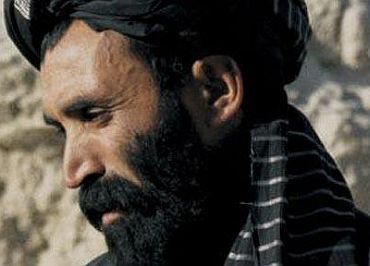
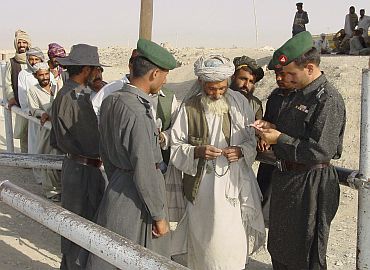
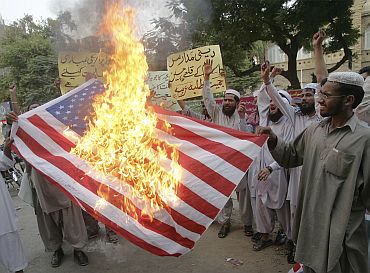
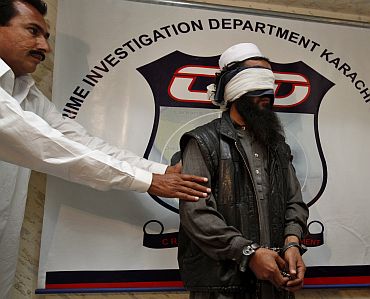
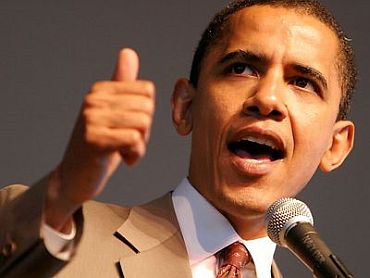
article